Carapidae: ABK III A1
Unknown
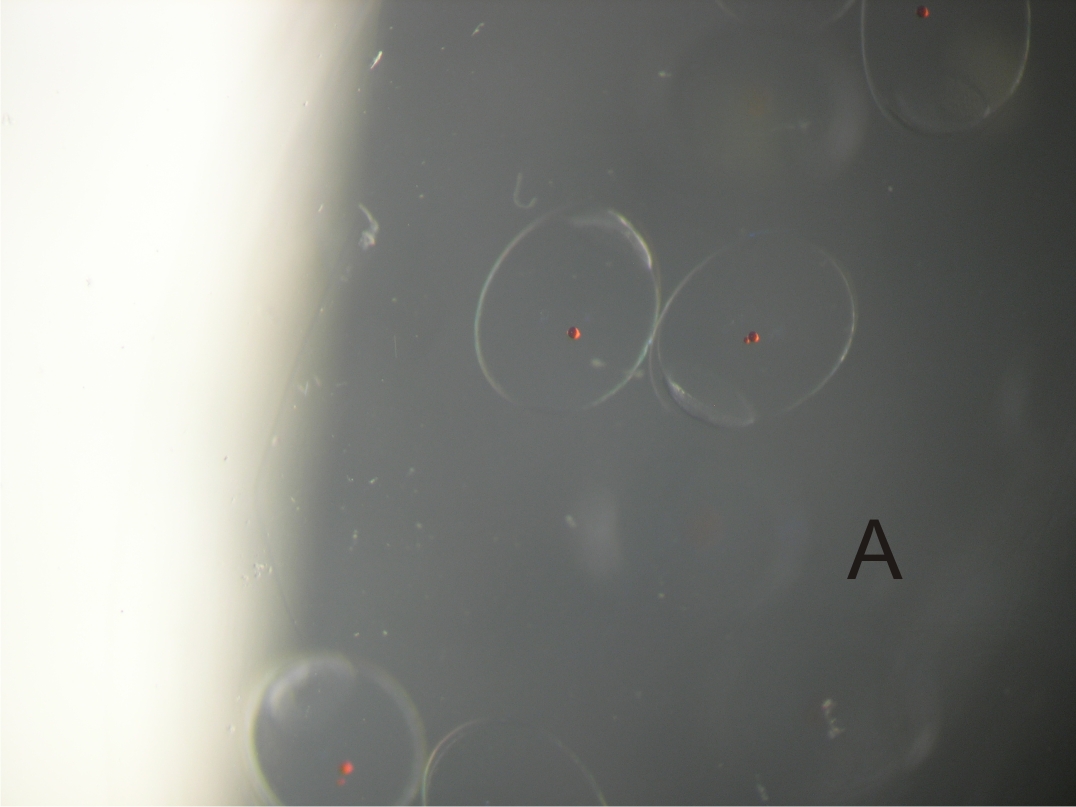

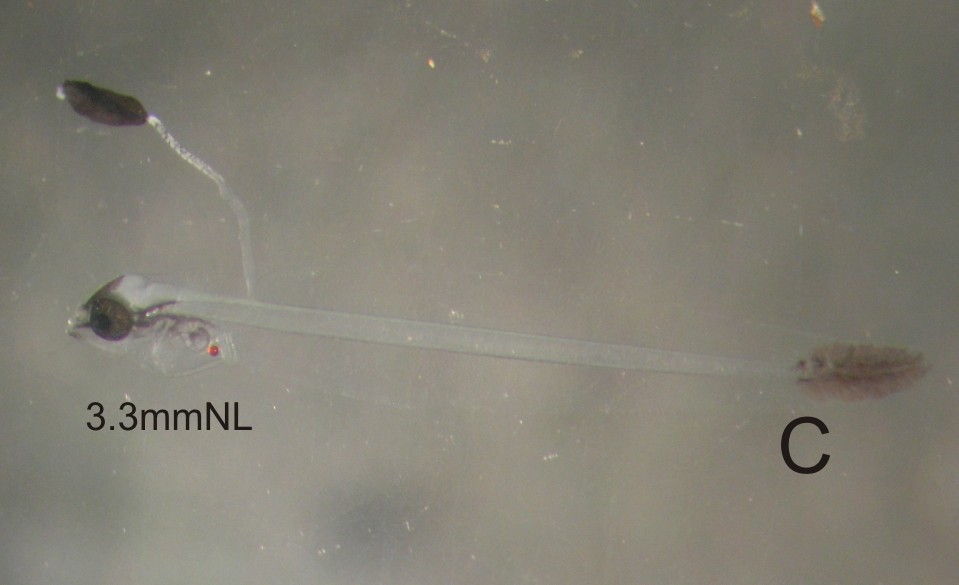
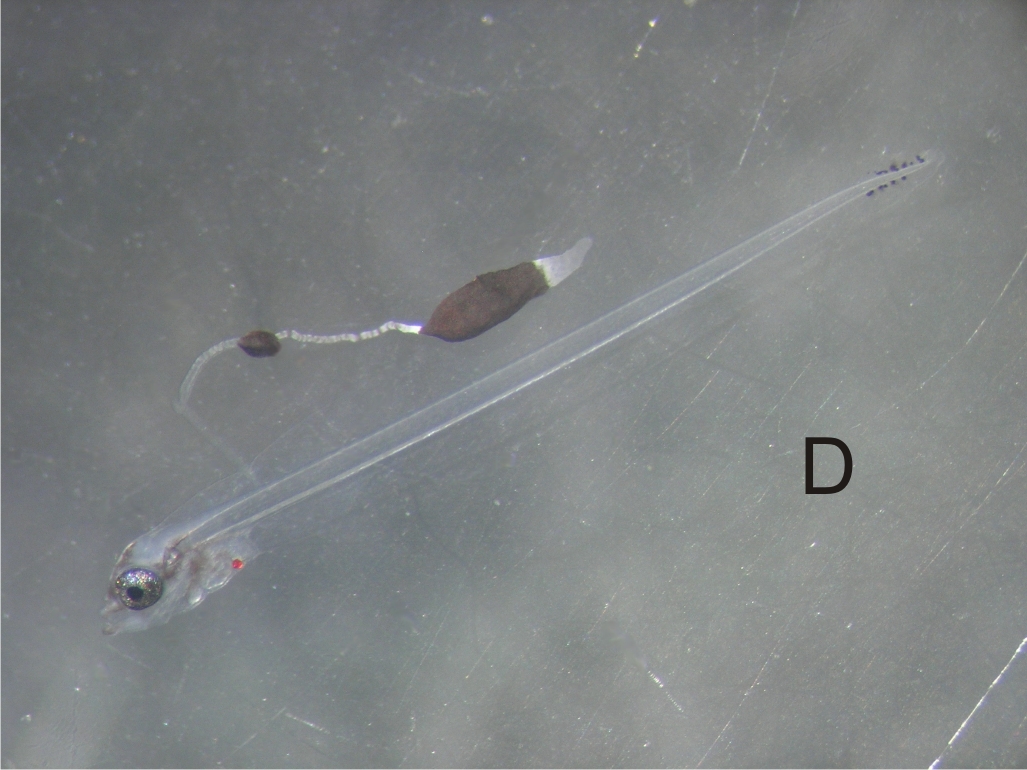
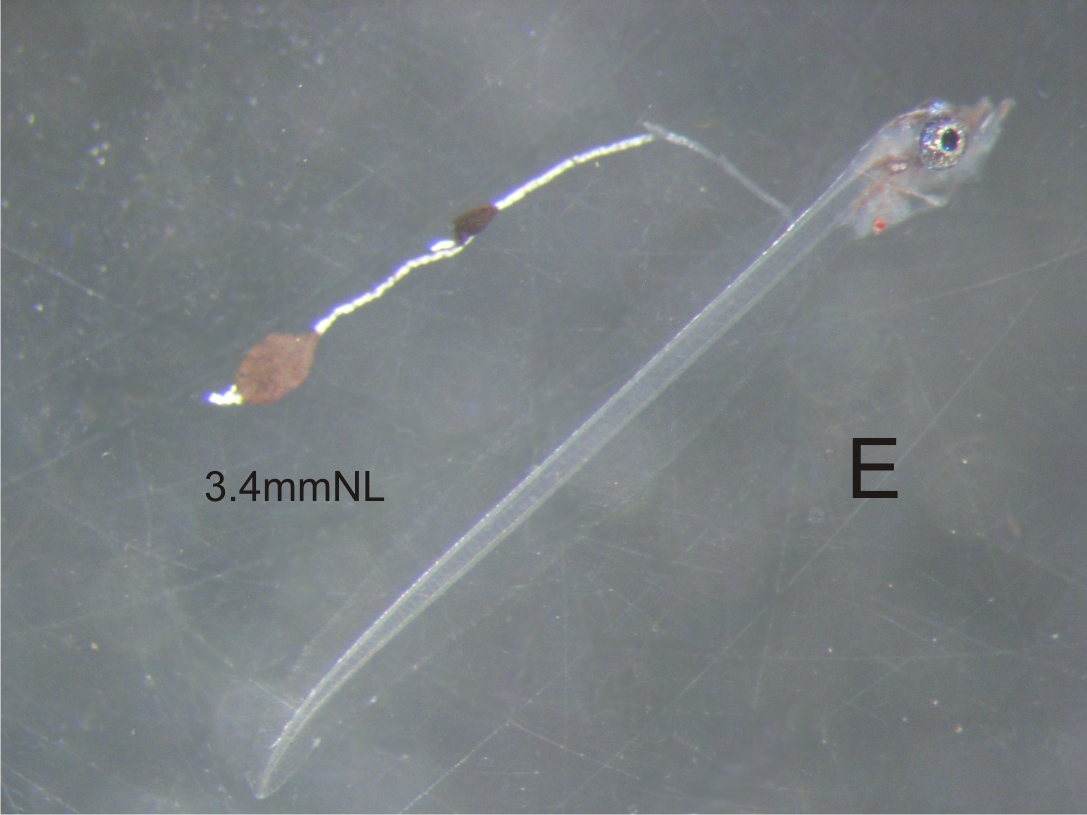
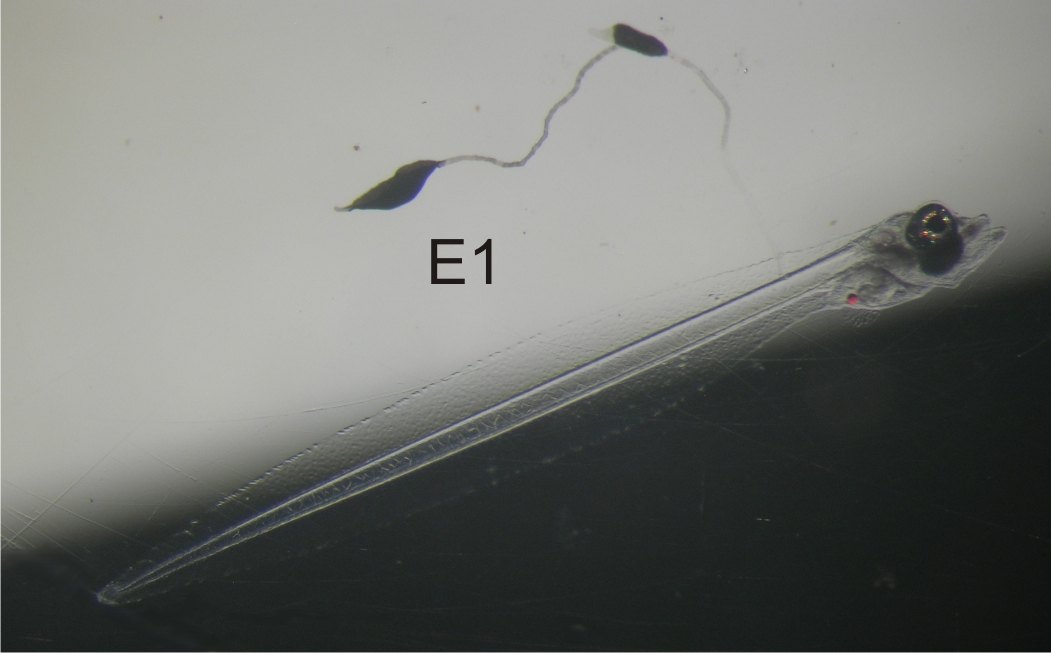
Egg size in µm |
Number of oil globules |
Diameter of oil globule in µm |
Yolk texture |
Perivitelline space |
Position of oil globule at hatch |
Gut length at eye- pigment stage |
Myomeres |
1200 x 770 |
1 |
35 |
clear |
narrow |
bow |
20% of NL |
>50 |
Egg: On 20 March 2010 I collected a small jelly mass of eggs in my offshore plankton haul. When suspended in a bowl of water, the egg mass was oval, and measured 7.8 x 5.8mm. It contained about 40 eggs. The eggs were fresh, with a tiny, bright red oil globule. After 36 hours the jelly mass was still intact, but most of the eggs had hatched. The diminutive size of the oil globule will separate this egg from BKIIIA1, another carapid egg found locally.
Larva: Newly hatched larva elongate, with black pigment in the head and thorax, and at the tip of the caudal finfold. The oil globule was in the front of the yolk (B). By day 4 a prominent vexillum had developed, with a dark leaf-like expansion at the tip, and black pigment was consolidated in the head and caudal finfold (C). At 5 days a second expansion developed in the vexillum, and the black pigment in the tail had formed two lines bordering the tip of the notochord (D). At 6 days caudal pigment was fading, and serrations were visible on the edge of the dorsal finfold (E). The larva was able to extend and partially retract the vexillum at will. B: newly hatched, C: 4 day, D: 5 days, E: 6 days.
This egg was not reared. Seven larvae from this batch were barcoded, but will all have the identical barcode as they are from the same female. The sequences are in BOLD under the egg code BFIIIA2, but no matching adult sequence is currently available. They cluster closely with Onuxodon parvibrachium, and O. margaritiferae, the only two local species of carapid that have been sequenced, and with BKIIIA1, in my barcode dendrogram.